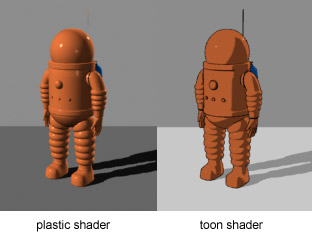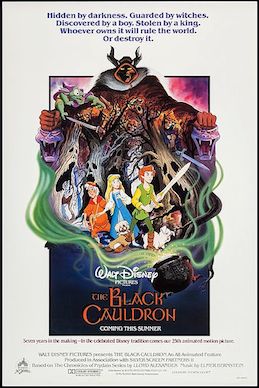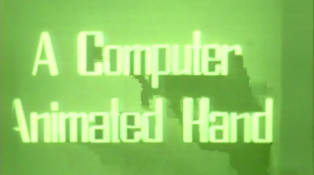
Animation is a method by which still figures are manipulated to appear as moving images. In traditional animation, images are drawn or painted by hand on transparent celluloid sheets to be photographed and exhibited on film. Today, many animations are made with computer-generated imagery (CGI). Computer animation can be very detailed 3D animation, while 2D computer animation can be used for stylistic reasons, low bandwidth, or faster real-time renderings. Other common animation methods apply a stop motion technique to two- and three-dimensional objects like paper cutouts, puppets, or clay figures.

The Walt Disney Studios, located in Burbank, California, United States, serves as the corporate headquarters for The Walt Disney Company media conglomerate. The 51-acre studio lot also contains several sound stages, a backlot, and other filmmaking production facilities for Walt Disney Studios's motion picture production. The complex also houses the offices for the company's many divisions, with the exception of the 20th Century Studios, which remains on its namesake lot in Century City.

An animator is an artist who creates multiple images, known as frames, which give an illusion of movement called animation when displayed in rapid sequence. Animators can work in a variety of fields including film, television, and video games. Animation is closely related to filmmaking and like filmmaking is extremely labor-intensive, which means that most significant works require the collaboration of several animators. The methods of creating the images or frames for an animation piece depend on the animators' artistic styles and their field.

The Little Mermaid is a 1989 American animated musical fantasy film produced by Walt Disney Feature Animation and released by Walt Disney Pictures. The 28th Disney animated feature film, it is loosely based on the 1837 Danish fairy tale of the same name by Hans Christian Andersen. The film was written and directed by John Musker and Ron Clements and produced by Musker and Howard Ashman, who also wrote the film's songs with Alan Menken. Menken also composed the film's score. Featuring the voices of Jodi Benson, Christopher Daniel Barnes, Pat Carroll, Samuel E. Wright, Jason Marin, Kenneth Mars, and Buddy Hackett, The Little Mermaid tells the story of a teenage mermaid princess named Ariel, who dreams of becoming human and falls in love with a human prince named Eric, which leads her to make a magic deal with the sea witch, Ursula, to become human and be with him.

The Great Mouse Detective is a 1986 American animated mystery adventure film produced by Walt Disney Feature Animation and released by Walt Disney Pictures. The 26th Disney animated feature film, the film was directed by John Musker, Ron Clements, Dave Michener, and Burny Mattinson. The main characters are all mice and rats living in Victorian London.
While the history of animation began much earlier, this article is concerned with the development of the medium after the emergence of celluloid film in 1888, as produced for theatrical screenings, television and (non-interactive) home entertainment.

Traditional animation is an animation technique in which each frame is drawn by hand. The technique was the dominant form of animation in cinema until computer animation.

Cel shading or toon shading is a type of non-photorealistic rendering designed to make 3-D computer graphics appear to be flat by using less shading color instead of a shade gradient or tints and shades. A cel shader is often used to mimic the style of a comic book or cartoon and/or give the render a characteristic paper-like texture. There are similar techniques that can make an image look like a sketch, an oil painting or an ink painting. The name comes from cels, clear sheets of acetate which were painted on for use in traditional 2D animation.

The Black Cauldron is a 1985 American animated dark fantasy adventure film produced by Walt Disney Productions in association with Silver Screen Partners II and released by Walt Disney Pictures. The 25th Disney animated feature film, it is loosely based on the first two books in The Chronicles of Prydain by Lloyd Alexander, a series of five novels that are, in turn, based on Welsh mythology.

Walt Disney Animation Studios (WDAS), sometimes shortened to Disney Animation, is an American animation studio that creates animated features and short films for The Walt Disney Company. The studio's current production logo features a scene from its first synchronized sound cartoon, Steamboat Willie (1928). Founded on October 16, 1923, by brothers Walt Disney and Roy O. Disney, it is the oldest-running animation studio in the world. It is currently organized as a division of Walt Disney Studios and is headquartered at the Roy E. Disney Animation Building at the Walt Disney Studios lot in Burbank, California. Since its foundation, the studio has produced 61 feature films, from Snow White and the Seven Dwarfs (1937) to Strange World (2022), and hundreds of short films.

The multiplane camera is a motion-picture camera that was used in the traditional animation process that moves a number of pieces of artwork past the camera at various speeds and at various distances from one another. This creates a sense of parallax or depth.
The Computer Animation Production System (CAPS) was a proprietary collection of software, scanning camera systems, servers, networked computer workstations, and custom desks developed by The Walt Disney Company and Pixar in the late 1980s. Although outmoded by the mid-2000s, it succeeded in reducing labor costs for ink and paint and post-production processes of traditionally animated feature films produced by Walt Disney Animation Studios. It also provided an entirely new palette of digital tools to the filmmakers.
Mathematical Applications Group, Inc. was an early computer technology company founded in 1966 by Dr. Philip Mittelman and located in Elmsford, New York, where it was evaluating nuclear radiation exposure. By modeling structures using combinatorial geometry mathematics and applying monte carlo radiation ray tracing techniques, the mathematicians could estimate exposures at various distances and relative locations in and around fictional structures. In 1972, the graphics group called MAGi/SynthaVision was formed at MAGi by Robert Goldstein.
The animation photo transfer process was a photographic transfer system that can photographically transfer lines or solid blocks of colors onto acetate sheets (cels). A similar process is used in making the stencils for silk screen printing. The process relies on UV-sensitive inks that cure when exposed to light and stick to the plastic sheet, while the ink in the non-exposed areas is chemically removed from the sheet.

The Magic of Disney Animation was a show and tour at Disney's Hollywood Studios, Florida. A Disney animator would show guests how the characters in Disney animated films were chosen and designed. The attraction closed permanently on July 12, 2015. In December 2015, the building began to be used to house the Star Wars Launch Bay.
The history of computer animation began as early as the 1940s and 1950s, when people began to experiment with computer graphics – most notably by John Whitney. It was only by the early 1960s when digital computers had become widely established, that new avenues for innovative computer graphics blossomed. Initially, uses were mainly for scientific, engineering and other research purposes, but artistic experimentation began to make its appearance by the mid-1960s – most notably by Dr Thomas Calvert. By the mid-1970s, many such efforts were beginning to enter into public media. Much computer graphics at this time involved 2-dimensional imagery, though increasingly as computer power improved, efforts to achieve 3-dimensional realism became the emphasis. By the late 1980s, photo-realistic 3D was beginning to appear in film movies, and by mid-1990s had developed to the point where 3D animation could be used for entire feature film production.

A Computer Animated Hand is the title of a 1972 American computer-animated short film produced by Edwin Catmull and Fred Parke. Produced during Catmull's tenure at the University of Utah, the short was created for a graduate course project. After creating a model of his left hand, 350 triangles and polygons were drawn in ink on its surface. The model was digitized from the data and laboriously animated in a three-dimensional animation program that Catmull wrote.
Lemuel Lanier Davis is a software engineer and former professor at Palomar College.
Mercury Filmworks is a Canadian independent animation studio based in Ottawa, Ontario. The studio was originally founded in Vancouver by Clint Eland, the current CEO, in 1997. Mercury Filmworks has produced animated television series and feature films for a variety of companies, including Disney, Netflix, Amazon Studios, and Warner Bros. Its recent projects include Kid Cosmic, Centaurworld, Hilda, The Wonderful World of Mickey Mouse, and The Ghost and Molly McGee. The studio has won Emmy Awards for its work in several categories, most recently for Hilda.
Hazel Mae Sewell, later Cottrell, was American animator and the first head of Walt Disney Studio's Ink and Paint Department.












